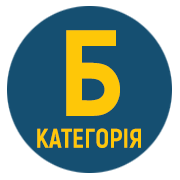DEVELOPMENT OF PSYCHOLOGICAL RESISTANCE IN WORK WITH IMAGES AND VISUALIZATION UNDER HOSTILITIES
DOI:
https://doi.org/10.32782/2311-8458/2023-1-3Keywords:
psychological stability, work with images, visualization, self-knowledge, turbota about oneself.Abstract
Abstract. The article is devoted to the theoretical analysis of psychological stability, which is one of the conditions for self-care during difficult periods of martial law. The essence and methods of developing psychological stability through a complex of psychological work with visualization and images have been clarified. It is indicated that the formation of skills necessary for maintaining psychological health in the stressful conditions of war provide not only psychological stability, but also give the prospect of taking care of oneself in the future and being stress-resistant during any difficult events. The guiding principles in working with images and visualization according to William Stewart, which teach the ecological use of these techniques with vulnerable populations affected by military aggression, are considered. The evolution of scientists’ views on working with visualization and images is highlighted. It was found that the use of these methods in different psychological approaches requires different qualities and skills, and the content remains the same. Self-awareness as a person, free expression of oneself and one’s request, creative development, creativity, expression of desires and feelings, in a complex, contribute to the relaxation of the psyche and the body as a whole. The authors of the article presented the results of the experience of using visualization exercises and working with images, with the aim of exploring one’s own self, developing psychological stability and taking care of one’s inner world and psychological health. The features of the use of art therapy methods of personality research, which contribute to the strengthening of psychological stability in the conditions of war, are detailed. The article also emphasizes the effectiveness of using art therapy methods in understanding and supporting a number of human problems, which contribute to a better understanding of not only oneself and one’s needs, but also the search for internal supports and resources that ensure high-quality healthy life. Prospects for further scientific research of working with images and visualization techniques have been defined, which provide an opportunity to explore the deep parts of our unconscious in a safe and ecological way, which strengthen psychological stability during awareness.
References
Дружиніна І. Проективна методика «Містечко». Психолог. Шкільний світ: Всеукраїнська газета. Київ : Шкільний світ, 2009. № 35. С. 7–10.
Стюарт В. Робота з образами та символами в психологічному консультуванні / переклад з англ. Н. А. Хмелик. Київ : Незалежна фірма «Клас», 1998. 223 с.
Франкл В. Людина у пошуках справжнього сенсу. Психолог у концтаборі. Харків, 2016. 160 с.
Калька Н. М., Легка А. І. Використання арт-терапевтичних технік для роботи з ресурсними станами (з досвіду застосування техніки «я-електроприлад»). Як вижити у світі, де дорослі «з’їхали з глузду»? Збірник тез IV Міжнародної науково-практичної конференції. 4–5 червня, Львів – Тернопіль, 2022. С. 97–100.
Підлипна Л. Терапія Мистецтвом. Івано-Франківськ, 2009. С. 8–14.





